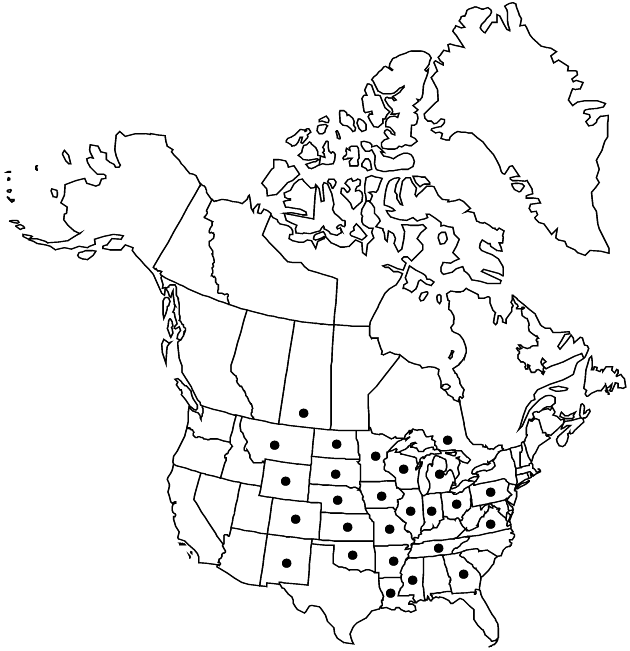Packera plattensis
Phytologia 49: 48. 1981.
Biennials or perennials, 20–60+ cm; rhizomatous and/or fibrous-rooted (bases erect to suberect), sometimes stoloniferous (mostly eastern populations). Stems 1 or 2–3, clustered, floccose-tomentose proximally and in leaf axils, otherwise sparsely tomentose or glabrescent. Basal leaves (and proximal cauline) petiolate; blades narrowly elliptic to elliptic-ovate or oblanceolate to suborbiculate or sublyrate, 20–70+ × 10–30+ mm, bases tapering to rounded or abruptly contracted, margins subentire to crenate, serrate-dentate, or pinnately lobed (abaxial faces floccose-tomentose, especially along midribs, ± glabrescent). Cauline leaves gradually reduced (petiolate, sublyrate or pinnatisect, abaxial faces sparsely hairy; distals sessile, subentire to irregularly dissected). Heads 6–20+ in open or congested, corymbiform arrays. Peduncles conspicuously bracteate, sparsely to densely tomentose. Calyculi inconspicuous. Phyllaries 13 or 21, green (tips sometimes cyanic), 5–6+ mm, densely tomentose proximally, glabrescent distally. Ray florets 8–10; corolla laminae 9–10 mm. Disc florets 60–70+; corolla tubes 2.5–3.5 mm, limbs 3.5–4.5 mm. Cypselae 1.5–2.5 mm, usually hirtellous, sometimes glabrous; pappi 6.5–7.5 mm. 2n = 46, 92.
Phenology: Flowering mid Apr–early Jun(–mid Jul, north).
Habitat: Prairies, meadows, open wooded areas, along highways, railroads, around mining and construction areas, usually on limestone
Elevation: 50–1800 m
Distribution

Ont., Sask., Ark., Colo., Ga., Ill., Ind., Iowa, Kans., La., Mich., Minn., Miss., Mo., Mont., Nebr., N.Mex., N.Dak., Ohio, Okla., Pa., S.Dak., Tenn., Va., Wis., Wyo.
Discussion
Packera plattensis is abundant, widespread, and almost weedy. Putative hybrids with other species are known. Plants in mesic, remnant prairies in the east are sometimes stoloniferous.
Selected References
None.